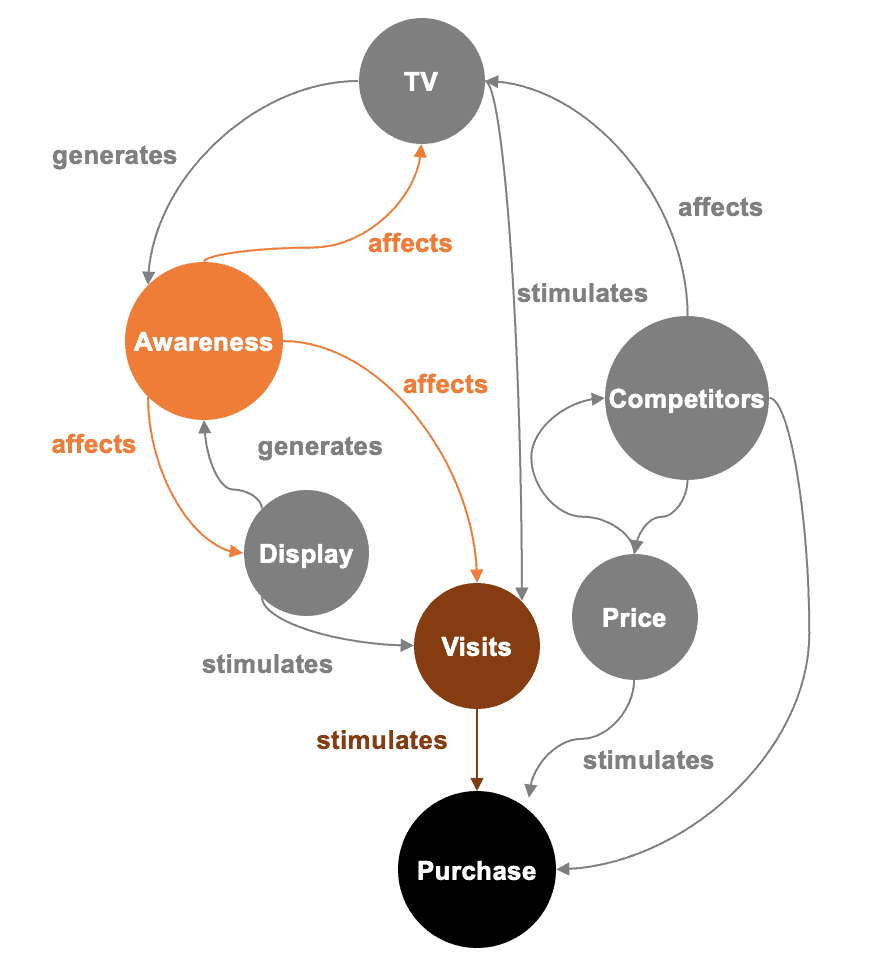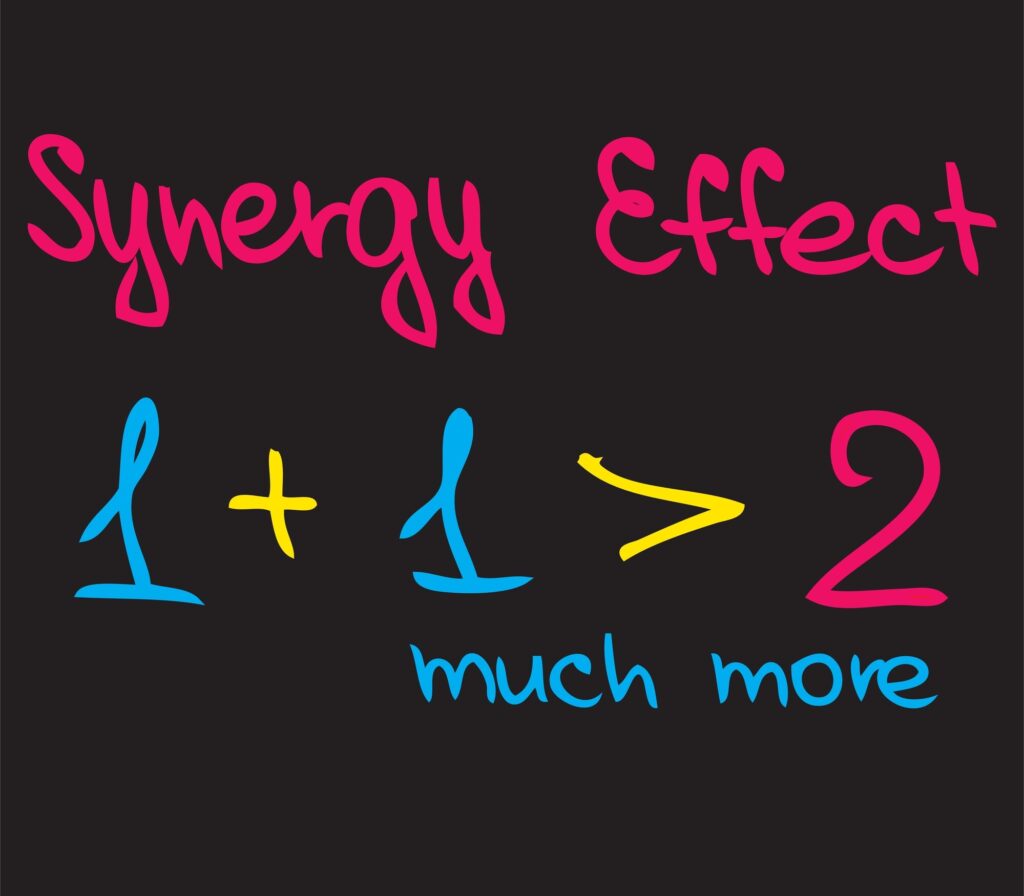Consumers live in a world of simultaneous media usage. They watch television while they surf online. They listen to the radio while they read the newspaper. They page through a magazine while they stream music. Companies that have understood these behavioral patterns and built synergistic campaigns across different media are already ahead, but can they measure their efforts?
The purpose of this blog is to go deeper into why synergies are essential and what it takes to build a synergy model that would tell the holistic truth and how it works.
Present Modus Operandi
Customer behavior data is usually siloed and scattered across the organization. As a result, the modern CMOs must juggle multiple dedicated tools to measure the impact of marketing activities and investments. Often left with incomparable data, leading to false attributions and suboptimization.
Last-touch attribution (which is still overwhelmingly used) has led to the over-investment in Google and Facebook ads and an over-reliance on measuring digital via web analytics, just because it’s easy.
There are still some very passionate advocates for digital measurements. It seems that it’s hard to make the mental mind shift to a holistic picture, and it’s even harder to find a toolset that can actually do it.
Some advertisers are trying to rectify this with TV data and other offline metrics to create a total view. Many internal data science teams want to have a crack at this problem, but it’s hard, and you end up with an enormous key person risk when there’s only one person who knows how to operate the model or make changes and adjustments.
The forward-thinking CMO
What is needed today is a new approach to media planning that recognizes consumers’ increasing ability to multitask and use a number of different media simultaneously. Such an approach would explain the role of synergy in omnichannel communications. For example, does synergy between television and print advertising exist in consumer markets? If synergy is present, how should marketing managers measure it using readily available market data? Furthermore, how does its presence affect managers’ decisions about the size and allocation of the media budget? If synergy increases or decreases in a market, how should managers alter their media budget and mix? Finally, how does synergy moderate the carryover effect of advertising?
What is synergy or how to solve 2+2=5?
The formal definition of synergy is – the interaction or cooperation of two or more organizations, substances, or other agents to produce a combined effect greater than the sum of their separate effects. For example, iTunes would have failed without the iPod and vice versa; combined, they created an incredible ecosystem. The same is true for the App Store and the iPhone.
One can often find synergy expressed as 2 + 2 = 5. For the same starting materials, we want greater results. Many marketers are intuitively pursuing an omnichannel strategy in their advertising but without quantifying and accounting for the exact added value in this approach – which is significant and potentially dangerous to ignore.
Why synergy matters to marketing?
The heart of synergy is the human experience, human behavior. So how do we combine different marketing strategies, tactics, and execution methods to generate results greater than any individual strategy, tactic, or execution?
This blog will account for two types of synergies, media-to-media and media-to-non-media.
For example, consider the idea of running television ads and display ads. When TV is aligned with other media channels, the combination drives additional sales uplift above their individual contributions. A display ad is twice as effective when combined with a TV campaign than without. In a typical customer journey, multiple touchpoints can influence the consumer. In a last-click attribution model, the sale will be attributed only to paid search or the clicked display ad, even if a TV ad initiates it. This example describes media-to-media synergy.
Media-to-non-media synergy accounts for the impact of offline advertising on organic website traffic. When the marketing team sees an increase in the website’s traffic, a first assumption might be that it’s due to your investments in Google Search ads or SEO practices, but that might not be entirely true. In reality, traffic to your website doesn’t happen out of nowhere. Whether the source is the result of pay-per-click advertising or non-paid clicks, something is driving it. Consumer behavior is complex in size, and again one needs to think about the total customer journey leading up to the sale. For example, increased brand exposure from paid offline advertising might indirectly be leading to higher organic search rankings. In turn, this leads to greater brand awareness, recall, and consideration

Truly leveraging synergy means learning how our customers behave, then applying marketing to blend harmoniously with their behaviors. That’s how marketers can generate more significant results with the same investment of resources. We want our marketing efforts not to be additive but multiplicative.
How to account for synergy effects in a holistic model?
In order to accurately quantify and account for the impact of synergies in any marketing attribution model, it’s necessary to introduce synergy submodels to the original sales model.
As mentioned above, multiple touchpoints can influence the consumer in a typical customer journey, meaning TV, radio, billboard, and other offline media can positively impact your online channels. To account for media-to-media synergies, at Blackwood Seven, we build submodels that can quantify and isolate offline media channels’ impact on lower-funnel conversion channels. The model measures the click-through rate of online ads, banners, etc., and attributes all the clicks to the responsible offline media ads to quantify the synergy effect coming from those media.
For the non-media-synergies, Blackwood Seven builds a model to measure how much the media investments contribute to the organic website traffic. In other words, in this case a synergy model is a model within a sales model: To attribute the organic website traffic, we account for the paid media, macro factors, distribution, competitive activity, and online and offline direct marketing, since all these factors affect the organic website traffic. Afterward, Blackwood Seven takes the synergy effects from the submodel and links them into the actual sales model. That way, the media’s contribution can be detected both directly through the primary model and indirectly through the synergy model.
By analyzing the synergy model, we can estimate the media’s contribution to paid and non-paid click sources. This hidden media effect is what the title of this blog post refers to – Getting more than you bargained for!
The obvious downside is that adding synergy doubles the size of the model and increases the computational complexity. However, Blackwood Seven’s modeling framework Hamilton AI allows for a highly detailed granularity level and is therefore capable of handling this situation.
Multiplicative marketing efforts
Traffic to your website drives sales, but traffic does not happen out of nowhere. While it is natural to track clicks, since paid clicks can easily be attributed directly to sales, this is not the immediate case for organic clicks because they are not linked to any media spend. Neither of these choices seems satisfactory. Consumers rarely search for a specific product without prior awareness of its existence, and even less so if they navigate directly to the company site. It is harmful not to see the entire truth and have false attribution because it will lead to wrong decision-making and overinvestment in media.
That is why marketers should focus not only on the ROI of each channel but also on understanding the role each media plays within the broader plan and the relationship between them. Or in other words, one needs a more holistic approach that accounts for the many marketing synergies when multiple marketing initiatives combine to create an effect more significant than the sum of their parts.
In order to accurately quantify and account for the impact of the many synergies, an elaborate model that can handle the immense complexity is needed, which requires a holistic attribution platform solution. And only then, by analyzing the synergy effects, can we quantify and optimize media’s full contribution to sales.
